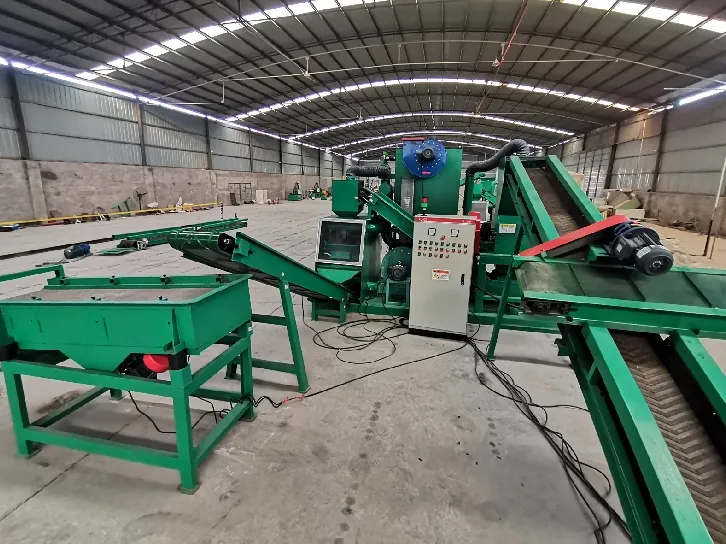In the dynamic world of waste management, recycling plants play a fundamental role in conserving natural resources and reducing environmental pollution. Central to their operations is the sorting of metals—an intricate process that involves advanced technologies and specialized skills. This article explores how metals are efficiently sorted in recycling facilities, focusing on the expertise, experience, authority, and trustworthiness which underpin these processes.

Recycling plants employ a variety of methods to sort metals, each crucial to maximizing sustainability and minimizing waste. The process begins at the collection point where metals are gathered from residential and industrial sources. The first stage involves manual sorting, where trained personnel use their expertise to separate metals based on size and type. This initial step is critical as it sets the foundation for more advanced sorting techniques.
One of the most effective technologies used in recycling plants is eddy current separation. This process employs powerful magnetic fields to distinguish between ferrous and non-ferrous metals. Ferrous metals, such as iron and steel, are strongly attracted to magnets and are easily separated from non-ferrous counterparts, which include valuable metals like aluminum and copper. Eddy current separators are highly authoritative in the recycling industry due to their efficiency and precision in extracting non-ferrous metals from mixed waste streams.

Further enhancing the authority of recycling processes is the use of spectroscopic techniques, such as X-ray fluorescence (XRF) and laser-induced breakdown spectroscopy (LIBS). These technologies provide expertise in analyzing and identifying metal compositions accurately. XRF, for instance, uses X-rays to determine the elemental composition of metals, facilitating the precise sorting of different alloys. LIBS, on the other hand, uses laser pulses to ablate a small part of the material surface, producing a plasma that is analyzed for its elemental makeup. These methods are trusted by recycling professionals for their ability to provide accurate and reliable data.
how metals are sorted in recycling plants
Advanced automation and robotic systems are also being increasingly implemented in recycling plants to enhance the efficiency of metal sorting. These systems, programmed with machine learning algorithms, possess the expertise to recognize and distinguish between various metal types swiftly. They utilize high-speed cameras and sensors to facilitate real-time sorting, greatly increasing throughput and reducing human error. The integration of robots solidifies the authority of these facilities in modern recycling practices.
Trustworthiness in the sorting process is further enforced through rigorous quality control measures. Recycling plants adhere to strict regulations and standards to ensure that sorted metals meet market requirements. Regular audits and inspections by third-party organizations guarantee that processes remain transparent and accountable, fostering confidence among stakeholders and consumers.
In conclusion, the sorting of metals in recycling plants is a sophisticated process governed by a combination of manual expertise and automated technologies. The use of eddy current separators, spectroscopic techniques, and robotic systems exemplify the authority and excellence prevalent in this field. By adhering to stringent quality control measures, recycling companies demonstrate their commitment to trustworthiness and environmental sustainability. As technological advancements continue to shape the industry, recycling plants are poised to become even more efficient and effective in their mission to conserve resources and protect our planet.


